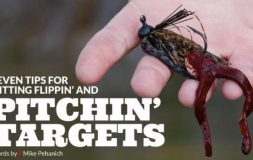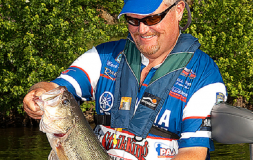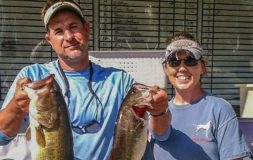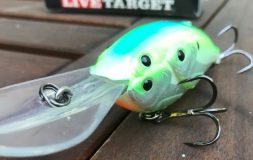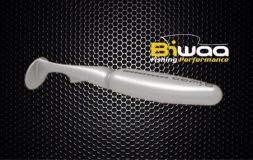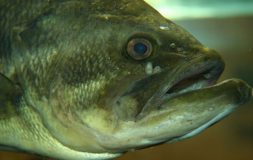3 Habits of the biggest bass
Written by Andrew Schadegg
A bass is a bass, right? We’ve heard this repeated, particularly when fishing new lakes and in many ways, it’s true.
What about the BIGGEST bass? The lunkers, the double-digits, the heaviest and oldest fish in the lake?
They’re still a bass. They still live by the same basic principles as their smaller counterparts, but there are some distinct differences that you may not be aware of, that will help you target them specifically the next time you’re on the lake.
Big Bass are Old and Stuck in their Ways
When you think of the biggest bass, think of your grandma. Big bass are old and predominantly females and do not stray from their daily schedule very often. Just like grandma. She stays close to home, plays Bridge with her friends Thursday at 5:00 pm, goes to the grocery store once a week on Mondays, and gets really upset when they’re out of her favorite oatmeal.
Studies of double-digit bass show that they have their own, very regimented schedule. Most have a home base, where they spend the majority of their day, but they venture out to feed at specific times (normally at dawn and dusk). They are creatures of habit, which has served their survival well and allowed them to live as long as they have.
Big Bass Live in Gated Communities
When a bass gets to that 10, 12, or even 14 pound mark they’ve managed to stay away from fisherman, avoid bigger predators, and survive the ravages of weather and changing conditions. They don’t get there by living in a one-bedroom apartment, just off the freeway, in the worst part of town. Big bass live in the safest, most protected neighborhood.
This is going to be different depending on your individual body of water, but a couple of commonalities have come up in studies. Look for the heaviest, thickest cover that provides oxygen, easily accessible sources of food, near some sort of underwater trails, like a creek channel, break-line or weed edge. If they don’t live in this thick cover or if none is available on your lake, they tend to go to deeper water and suspend, where they also are comfortable and protected.
Big Bass Eat Bigger and Better Meals
Giant bass don’t slum it at the local McDonalds very often. They feed less than smaller bass, so when they do eat, they don’t waste their time with a meal that isn’t full of protein and big enough to fill their bellies. This will be different depending on your body of water, but one universal that rings true without a lot of reservation…big baits equal big fish.
Out west over the last 20 years, images of giant, double-digit bass with 8-14 inch trout swimbaits hanging out of their mouth, have been plastered all over magazine pages and the internet. If your lake has trout, this might be the forage you need to imitate, but it could be gizzard shad, other bass, frogs, birds, blueback herring or any number of other big tasty meals. Figure out what the big fish target and you’ll be a lot closer to catching your next personal best.





